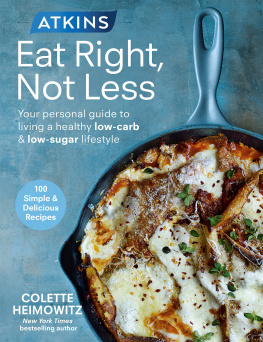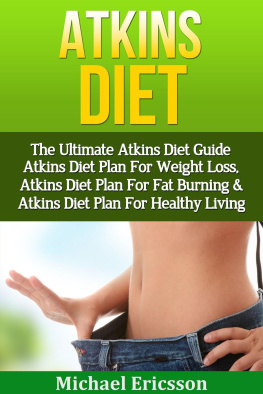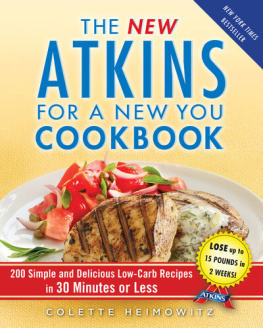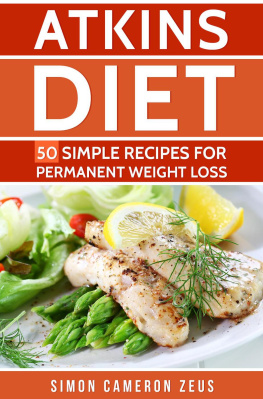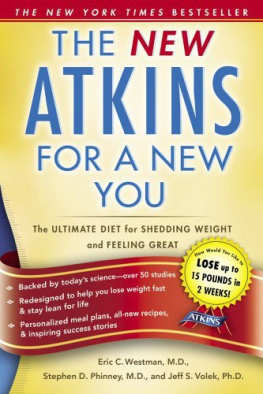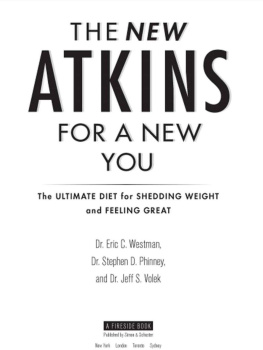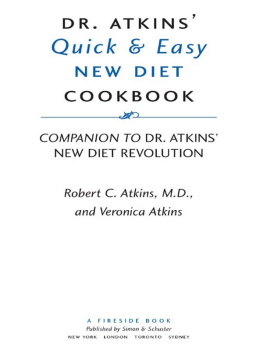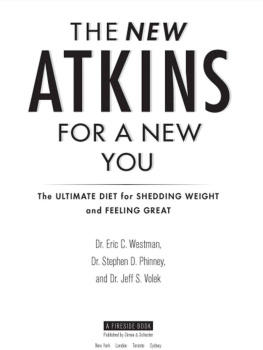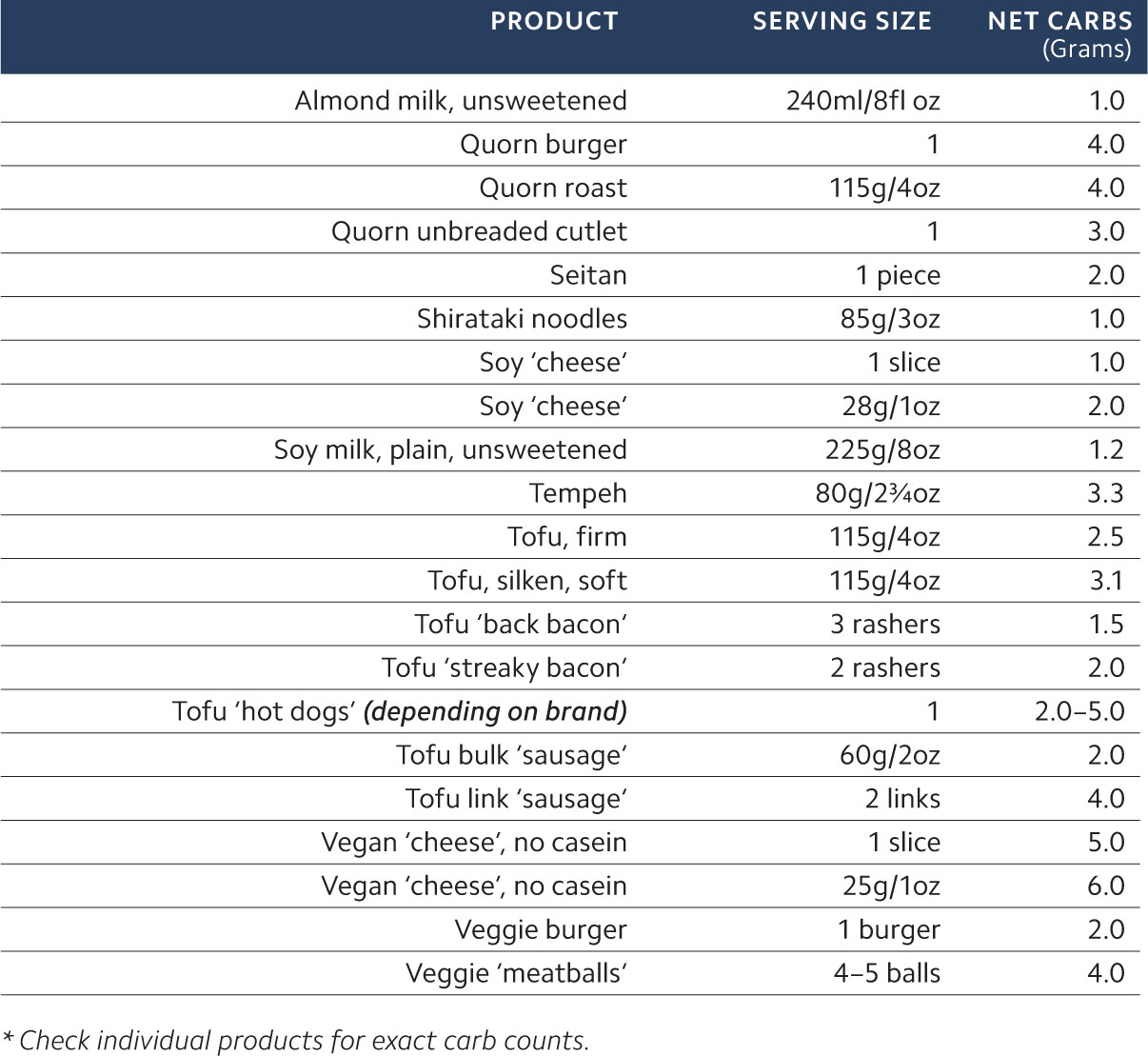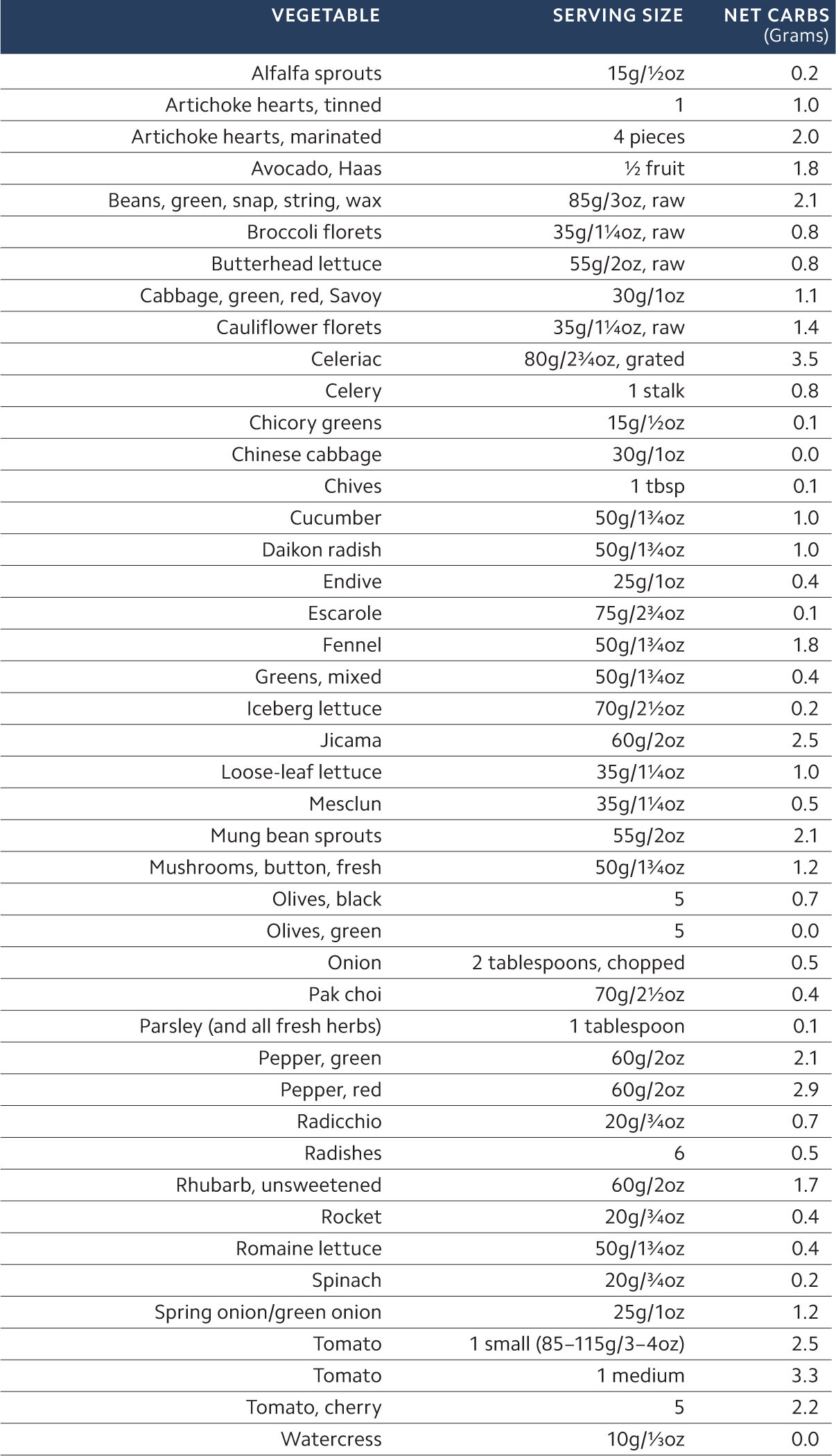ABOUT THE
AUTHOR
As Vice President of Nutrition and Education, Colette Heimowitz is the driving force for nutrition information at Atkins Nutritionals, Inc. She is the nutritionist face of the Atkins Community, which is dedicated to helping people reach their weight-loss goals. As part of this initiative, she publishes a weekly Nutritionist Blog, creates content devoted to educating new members about the programme, and stays up to date on emerging research on human nutrition.
Colette has been a guest on American national radio programmes, as well as on television networks including CNN, Fox News and MSNBC. She has more than twenty-five years of experience as a nutritionist and received her M.Sc. in clinical nutrition from Hunter College of the City University of New York.
ABOUT THE
BOOK
For more than forty years, Atkins has used proven scientific research to help millions of people achieve weight loss and weight management goals on a lower-carb diet. But while many people would like to lose weight, most dont want to adhere to a strict program.
Discovering a healthy, sustainable way of eating that you can live with beats yo-yo dieting that only leaves you frustrated and discouraged. Atkins: Eat Right, Not Less offers choices and plans, and helps you find the right level of carbohydrate for you.
Beautifully illustrated and filled with 100 whole food recipes, from flaxseed bread to a Thai peanut Buddha Bowl, and simple solutions for eating the foods we love in a healthier way, this brand-new Atkins guide focuses on eating right not less to achieve weight management goals and improve your overall health.
ACKNOWLEDGEMENTS
Im proud to say that writing this book was a team effort. It began with the realization that we had this amazing opportunity to speak to a very important part of our population that is interested in making small changes and embracing a better way of eating by learning how to live a low-carb, low-sugar lifestyle. You are done with diets, but you are passionate about the quality and quantity of the food you eat and how it impacts your overall health and wellness.
I am thankful to the leadership and vision of Scott Parker, Chief Marketing Officer (CMO) at Atkins, and Jennifer Livingston, Director of Public Relations, who were enormously helpful with insightful comments and additions from the very beginning, when this book was simply just a glimmer in our eyes, and during the continual process of bringing it to life. Gretchen Ferraro, freelance writer, was the Editorial Director who collaborated with me, and without her contributions, this book would not have been possible. Nutritionist Vicki Cox, Director of Nutrition Communications at Atkins, pored over every word for accuracy and supplied scientific references and insight where needed. Jennifer Knollenberg created our delicious and useful meal plans, which incorporated the recipes in this book; it was no easy task to meet all our nutritional targets, but she did it. And I would like to extend a special thanks to Joe Scalzo, Atkins Chief Executive Officer, and Hanno Holm, Atkins Chief Operations Officer, for their insights in supporting this book and assembling this talented team.
The key to this book is the mouthwatering low-carbohydrate and low-sugar recipes created by Jennifer Iserloh, which demonstrate once and for all that eating the Atkins way eating right, not less is wonderfully flexible and can be personalized to suit your individual needs. With Atkins, food should be an experience worth sharing and savouring with others, and these recipes are a testament to that.
Finally, this book would not have been possible without Joy Tutela, from the David Black Literary Agency, who went above and beyond in coordinating the moving pieces, and many thanks to the superb editorial efforts of Cara Bedick, Senior Editor at Touchstone/Simon & Schuster.
Last, but far from least, I am so thankful to Ellen Silverman for contributing her beautiful photography to this project. I knew the first time I saw her work that I wanted her and her team to work on this book. The end result is a dream come true: a coffee tableworthy book that showcases how delicious living a low-carb lifestyle can truly be.
YOU CAN CUSTOMIZE THE ATKINS PLAN OF YOUR CHOICE
with the following Acceptable Foods lists for Atkins 20, 40 and 100,
plus learn about a variety of low-carb products found in supermarkets to round out your meals and snacks. Last, but not least, you can review the extensive list of scientific studies that support your low-carb, low-sugar lifestyle.
APPENDIX A
ATKINS 20 LEVEL 1 ACCEPTABLE FOODS
This is an extensive list, but it may not include all possible Acceptable Foods
FISH AND SHELLFISH
Most fish and shellfish contain no carbs. All are acceptable with the following exceptions:
Avoid pickled herring prepared with sugar, artificial crab (surimi) or seafood sticks, and other processed shellfish products.
Oysters and mussels contain carbs, so limit to about 115 grams/4 ounces per day.
Do not breadcrumb seafood.
POULTRY
All pure poultry products are acceptable.
Do not use any products with breadcrumbs or fillers.
MEAT
All pure meat products are acceptable.
Avoid any processed meats with fillers (some salami, pepperoni, hot dogs, sausages, meatballs) or breadcrumbs, or that are cured with sugar (bacon, ham).
EGGS
Eggs in any style are acceptable.
SOY AND VEGETARIAN PRODUCTS
Quorn products contain milk and eggs, making them unsuitable for vegans.
Soy cheeses that contain casein, a milk product, are also unsuitable for vegans.
Many veggie burgers have carb counts higher than 2 grams of Net Carbs and ingredients that may not be acceptable in Level 1.
CHEESE
All cheese except ricotta and cottage cheese (they can be added in Level 2).
Up to 115 grams/4 ounces a day. A tablespoon or two of any grated cheese contains a negligible amount of carbs.
Avoid cheese spreads that contain other ingredients for example, strawberry cream cheese, diet cheese, cheese products and whey cheeses none of which is 100 percent cheese.
Soy or rice cheese is acceptable, but check the carb count.
FOUNDATION VEGETABLES
These include both salad vegetables and others that are usually cooked.
Salad Vegetables
Measure the following salad vegetables raw (except for artichoke hearts).
Tomatoes, onions and peppers are higher in carbs than other salad vegetables, so use them in smaller portions.
Included are fruits generally thought of as vegetables, such as avocados and olives.
Cooked Vegetables
Some also appear on the salad vegetable list, but cooking compacts them, which explains the differences in carb counts.

